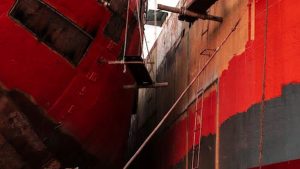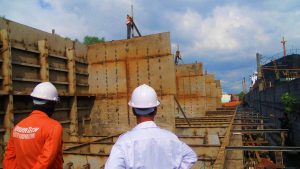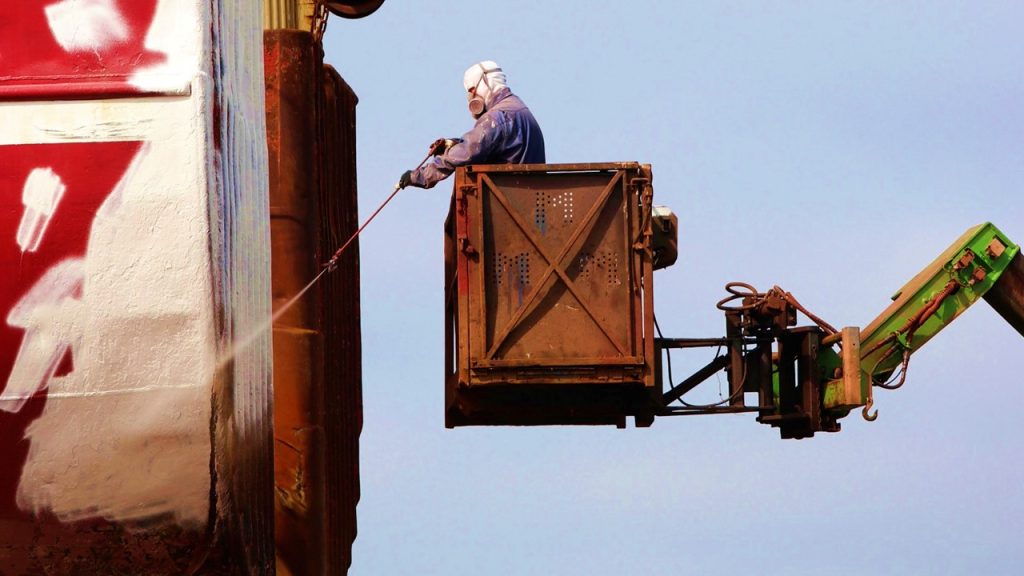Ahoy there! Are you dreaming of embarking on an oceanic adventure aboard your very own vessel? The Philippines might be your ticket to nautical bliss with its array of top-notch shipyards catering to all your seafaring needs. From major repairs and maintenance work to building custom-made boats, these shipyards are transforming dreams into reality. Join us as we navigate through this archipelago’s bustling maritime industry and uncover insider tips on how to select the crème de la crème among them – prepare to weigh anchor and embark on an exciting quest for the best shipyard in the Philippines!
Click here to learn about our shipyard facilities in Tanza, Cavite, Philippines.
The Importance of Choosing the Right Shipyard in the Philippines
When it comes to choosing the right shipyard in the Philippines, several factors need to be considered. One of the most important aspects is the reputation and track record of the shipyard. It is crucial to choose a shipyard that has a proven history of delivering high-quality work and meeting deadlines.
Another important factor to consider is the facilities and resources available at the shipyard. A well-equipped shipyard with modern facilities and state-of-the-art equipment will ensure efficient and effective repairs or construction projects. Additionally, having access to a skilled workforce with expertise in different areas of shipbuilding or ship repair is also essential.
Choosing the right shipyard in the Philippines can have a significant impact on project timelines, costs, and overall customer satisfaction. It is important for vessel owners or operators to carefully evaluate their options based on reputation, facilities, resources, and specific project requirements. By making an informed decision when selecting a shipyard, customers can ensure successful outcomes for their projects while minimizing risks and maximizing returns on investment.

Location of the Shipyard in the Philippines: Proximity to Major Ports and Shipping Routes
When choosing a shipyard in the Philippines, one crucial factor to consider is its proximity to major ports and shipping routes. This geographical advantage can make a significant difference in terms of efficiency and cost-effectiveness for ship owners and operators.
The Philippines is strategically located in Southeast Asia, making it an ideal hub for maritime activities. With more than 7,000 islands, the country has numerous ports that are easily accessible from different parts of the world. Shipyards located near major ports offer several benefits, such as shorter travel distances, faster turnaround times, and easier access to necessary equipment and supplies.
Furthermore, being close to major shipping routes provides a competitive edge for shipyards in terms of attracting international clients. Ships can be repaired or retrofitted conveniently while en route or during layovers at these locations without deviating from their planned routes excessively. This saves time and money for ship owners by minimizing downtime and maximizing operational efficiency.
When deciding on the best shipyard in the Philippines, considering its location’s proximity to major ports and shipping routes is essential. The convenience offered by nearby ports ensures smoother operations while minimizing costs associated with longer travel distances. Moreover, being strategically situated along busy shipping lanes allows shipowners to optimize repair schedules without disrupting their voyages significantly. When all these factors align harmoniously, it becomes evident why choosing a shipyard with close ties to major maritime hubs is crucial for efficient vessel maintenance and repair services.

Facilities of the Shipyard in the Philippines: Availability of Dry Docks, Cranes, and Equipment
When it comes to choosing the best shipyard in the Philippines, one factor that cannot be overlooked is the availability and quality of facilities. In this regard, Filipino shipyards have proven to be exceptional. These shipyards boast a wide range of facilities, including state-of-the-art dry docks, cranes, and equipment. The availability of dry docks is particularly crucial for any shipyard as it allows for efficient repair and maintenance work. Thankfully, the shipyards in the Philippines offer a sufficient number of dry docks with various capacities to accommodate vessels of different sizes.
In addition to dry docks, another vital facility found in these shipyards is an extensive fleet of cranes. These cranes are designed to handle heavy loads and ensure smooth operations within the shipyard. With their high lifting capacities and advanced features such as remote control systems and load monitoring capabilities, these cranes enhance productivity while ensuring safety. Moreover, Filipino shipyards are equipped with a wide array of specialized equipment required for various activities such as welding, piping installation, painting, insulation work, and more.
The availability of top-notch facilities like dry docks, cranes, and equipment makes Filipino shipyards a preferred choice for both local and international clients seeking reliable services. With their state-of-the-art infrastructure combined with skilled workforce expertise gained from years of experience in the industry, these shipyards continue to excel in meeting the demands of vessel repair and construction projects worldwide. Whether it’s large-scale repairs or routine maintenance tasks that need attention, you can trust Philippine shipyards to deliver exceptional results.

Expertise of the Shipyard in the Philippines: Experience and Specialization in Specific Types of Vessels
One of the key factors to consider when choosing a shipyard in the Philippines is their expertise and experience in specific types of vessels. While some shipyards may have a general capability to handle various types of ships, others specialize in certain categories, such as tankers, container ships, or passenger vessels. The advantage of working with a shipyard that specializes in specific types of vessels is that they possess deep knowledge and technical know-how related to these particular ships. From design and construction to repair and maintenance, these specialized shipyards can offer more efficient and effective solutions tailored specifically for these vessel types.
For example, if you’re looking to construct or repair tankers, it would be wise to choose a shipyard that has a proven track record in handling such projects. These specialized shipyards are likely to have dedicated facilities and equipment specifically designed for tankers. Moreover, they will have well-trained staff who are familiar with the intricacies involved in building or repairing these large-scale vessels.
Another benefit of working with specialized shipyards is their ability to provide industry-specific expertise and insights. They understand the unique challenges faced by different types of vessels and can offer innovative solutions based on their extensive experience. By leveraging their knowledge about each vessel type’s performance requirements, fuel efficiency considerations, safety regulations, and other critical factors specific to them, specialized shipyards can ensure superior quality workmanship that meets your specific needs.
When evaluating the best shipyard in the Philippines for your project needs, it is crucial not only to consider their capabilities and facilities but also their industry-specific expertise. Specialized shipyards offer a distinct advantage in terms of understanding the intricacies and complexities of different vessel types.

Reputation of the Shipyard in the Philippines: Reviews, References, and Track Record of Success
When it comes to choosing the best shipyard in the Philippines, reputation is everything. Before entrusting your vessel to any shipyard, it is crucial to thoroughly research their reviews, references, and track record of success. Fortunately, the shipyards in the Philippines have gained a commendable reputation in recent years.
One way to gauge a shipyard’s reputation is by looking at its customer reviews. Check for online platforms or forums where customers leave feedback about their experiences with different shipyards. Look out for indicators of excellent service, such as timely completion of projects, high-quality craftsmanship, and strong communication throughout the process.
Additionally, references from other industry professionals can provide valuable insights into a shipyard’s capabilities. Reach out to trusted contacts within the maritime industry who have previously worked with shipyards in the Philippines. Their first-hand experiences can shed light on important factors like adherence to safety regulations and the ability to handle complex projects.
Lastly, examining a shipyard’s track record of success is essential for making an informed decision. Look into their portfolio of completed projects and assess whether they align with your requirements and expectations. A reputable shipyard will showcase diverse vessels they have successfully repaired or built, which demonstrates their expertise across different sectors.
Remember that while a good reputation does not guarantee perfection, it does increase your chances of finding a reliable and competent shipyard in the Philippines.

Cost and Pricing Options of the Shipyard in the Philippines
When it comes to choosing the best shipyard in the Philippines, one of the crucial factors to consider is cost and pricing options. While quality and reputation are important considerations, it is equally vital to ensure that the shipyard’s prices align with your budget.
The cost of shipyard services can vary depending on several factors, including the size and complexity of the project, as well as additional services required, such as equipment rentals or repairs. Some shipyards offer fixed pricing packages for specific types of vessels or projects, which can be beneficial if you have a straightforward job. However, if your project has unique requirements or calls for specialized expertise, it may be necessary to negotiate pricing options with the shipyard.
It is also worth noting that while cost is an important consideration, it should not be the sole determining factor in choosing a shipyard. Quality workmanship and adherence to international standards are crucial elements that could affect safety and longevity. Therefore, while considering pricing options from various shipyards in the Philippines, make sure to evaluate their past projects and reputation within the industry. Ultimately, striking a balance between competitive pricing and exceptional service will lead you to choose the best shipyard for your needs.

How to Compare Quotes from Different Shipyards in the Philippines?
When it comes to choosing the best shipyard in the Philippines, one of the most crucial steps is comparing quotes from different shipyards. This process allows you to assess each shipyard’s pricing structure and determine which one offers the best value for your money. It’s important to remember that price shouldn’t be the sole determining factor but rather just one aspect of your decision-making process.
To effectively compare quotes, start by requesting detailed estimates from each shipyard. These should include a breakdown of all costs, including labor, materials, and any additional charges or fees. Look for transparency in their pricing and make sure there are no hidden costs that could potentially surprise you later on.
Next, consider the reputation and experience of each shipyard. While it’s tempting to go for the lowest quote, it’s equally important to choose a reputable shipyard with a proven track record of delivering quality workmanship and timely projects. Look for online reviews or seek recommendations from other industry professionals who have worked with these shipyards before.
Lastly, don’t hesitate to reach out to each shipyard and ask for clarification or further details about their quotes. Engaging in direct communication will give you a better idea of their level of customer service and how responsive they are to client inquiries.
By thoroughly comparing quotes from different shipyards in the Philippines based on cost transparency, reputation/experience, and communication effectiveness, you’ll be better equipped to make an informed decision when selecting the best shipyard for your project. Remember that it’s not just about finding the shipyard with the lowest price but also one that offers quality workmanship and meets your specific requirements.

What Hidden Charges of the Shipyard in the Philippines to Watch Out For?
When choosing a shipyard in the Philippines, it’s essential to be aware of any hidden charges that may come your way. These unexpected fees can quickly add up and significantly impact your budget. One common hidden charge to watch out for is the demurrage fee. This fee is imposed if your vessel stays in the shipyard longer than the agreed-upon time frame. While delays can sometimes be unavoidable, it’s crucial to clarify this fee with the shipyard beforehand and negotiate a fair rate or establish a clear understanding of possible causes for delays.
Another often overlooked hidden charge is what some shipyards refer to as container handling fees. This charge applies when you need containers to store various materials during repairs or maintenance works. Some shipyards may quote you an initial price that does not include container handling fees and surprise you with additional charges later on. To avoid these surprises, it’s important to ask for a comprehensive breakdown of all costs involved upfront and ensure that container handling fees are included.
Although choosing a shipyard in the Philippines can bring many benefits, it’s crucial to be cautious and informed about potential hidden charges. By being aware of common fees like demurrage fees and container handling fees, you can negotiate better deals and budget accordingly. Remember that transparency is key when entering into agreements with any shipyard, so don’t hesitate to clarify all costs involved before making your final decision.

Safety Measures of the Shipyard in the Philippines
When it comes to choosing the best shipyard in the Philippines, one of the most crucial factors to consider is its commitment to safety measures. Shipbuilding and repair activities involve numerous hazardous tasks, so it’s essential for a shipyard to prioritize safety and implement preventive measures effectively. For instance, a top-notch shipyard should have comprehensive safety training programs for its workers, covering topics such as fire prevention and control, proper handling of hazardous materials, personal protective equipment (PPE) usage, and emergency response protocols.
Another important safety measure that sets apart the best shipyards in the Philippines is regular maintenance and inspection of equipment and facilities. This ensures that tools are in good working condition while preventing accidents resulting from faulty machinery or infrastructure issues. Moreover, well-maintained spaces allow workers to navigate around safely without any obstructions or potential hazards. By combining proper maintenance with thorough inspections performed by qualified personnel on a regular basis, shipyards can identify potential risks before they escalate into significant incidents.
To further enhance safety at a shipyard in the Philippines, implementing risk management strategies is crucial. By conducting thorough risk assessments on an ongoing basis for various tasks and projects within the facility, hazards can be identified promptly, along with appropriate control measures put in place. These strategies could include developing safe work procedures specific to different areas or operations within the shipyard and ensuring all employees are aware of them through regular training sessions.
By focusing on these key aspects of safety measures – comprehensive worker training programs, regular maintenance and inspection checks on facilities, and the implementation of safety protocols in all work processes can be achieved.

Compliance of the Shipyard in the Philippines with Industry Regulations and Standards
When choosing the best shipyard in the Philippines, one crucial factor to consider is compliance with industry regulations and standards. The country has comprehensive laws and regulations governing shipbuilding and ship repair activities, ensuring safety, quality, and environmental protection. These regulations from MARINA cover various aspects, such as construction standards, equipment certification, worker safety protocols, and waste management processes.
Opting for a shipyard that strictly adheres to these regulations can provide peace of mind to vessel owners or operators. It ensures that their vessels are built or repaired according to globally recognized standards for safety and operational excellence. Additionally, compliance with environmental regulations promotes sustainable practices in shipbuilding operations by minimizing pollution risks and reducing the industry’s impact on ecosystems.
However, it is not enough for a shipyard to merely claim compliance with industry regulations; there must also be evidence of regular inspections by regulatory authorities. This means that ships being built or repaired at these yards are subjected to rigorous checks during key stages of construction or repair. Moreover, periodic audits by regulatory bodies ensure consistent adherence to standards across different projects.
Choosing a shipyard in the Philippines that demonstrates impeccable compliance with industry regulations showcases its commitment to quality workmanship while also prioritizing the safety of workers. It underlines an organization’s dedication not only to meeting international benchmarks but also to continuously improving its performance through feedback from regulatory bodies and implementing best practices from around the world.
Due diligence is essential when selecting a shipyard in the Philippines. Ensuring compliance with industry regulations guarantees that vessels are constructed to the highest standards, minimizing the risk of accidents and ensuring optimal performance.

How to Find Out the Quality Assurance Processes in Place of the Shipyard in the Philippines?
When choosing a shipyard in the Philippines for your maritime needs, one of the most important factors to consider is the quality assurance processes in place. Ensuring that a shipyard has robust quality control measures can help you avoid costly delays, rework, and safety issues down the line.
To find out about the quality assurance processes in place at a shipyard, there are several steps you can take. First and foremost, ask for documentation. A reputable shipyard should be able to provide you with detailed information about its quality management system (QMS). Look for certifications such as ISO 9001:2015, which demonstrates that the shipyard adheres to international standards for quality management.
In addition to reviewing documentation, it’s also important to visit the shipyard in person. Take a tour of their facilities and observe their operations firsthand. Look for signs of an organized and well-maintained work environment. Pay attention to cleanliness, proper storage of materials and tools, and adherence to safety protocols.
Lastly, don’t hesitate to ask questions during your visit. Inquire about specific quality control procedures they have in place at different stages of the shipbuilding process. Ask about how they handle inspections and testing, as well as any continuous improvement initiatives they have implemented.
Understanding the quality assurance processes of a shipyard will provide peace of mind, knowing that your vessel will be constructed or repaired in accordance with industry best practices and high-quality standards. Taking these steps before making your decision will ensure that you choose a shipyard in the Philippines that can meet your needs and deliver a vessel of the highest quality.

Timeframe and Efficiency of the Shipyard in the Philippines
When choosing a shipyard in the Philippines, one important factor to consider is the timeframe and efficiency of their operations. Time is money in the shipping industry, so it’s crucial to work with a shipyard that can deliver quality results within a reasonable timeframe. The Philippines is home to several world-class shipyards renowned for their efficiency and timely completion of projects.
The efficiency of a shipyard can be assessed through various metrics such as project schedule adherence, on-time delivery, and productivity. Look for testimonials or case studies from previous clients to get an idea of how well a particular shipyard performs in terms of meeting deadlines and delivering projects on time. It’s also essential to consider the size and capacity of the shipyard. A larger facility often indicates more resources available, allowing for faster turnaround times.
Efficiency isn’t just about completing projects quickly; it’s also about doing them right the first time. This means considering factors such as quality control measures, adherence to industry standards, and attention to detail during every step of the construction or repair process. Working with an efficient shipyard ensures that your vessel will be handled by experienced professionals who take pride in their workmanship.
In conclusion, when choosing a shipyard in the Philippines, prioritize those known for their efficient operations and timely delivery. Consider factors like past performance, facility size, and attention to detail when making your decision. By selecting an efficient shipyard for your project or vessel repair needs, you can trust that your investment will be well taken care of while ensuring that the project is completed on time and within budget. Additionally, an efficient shipyard will have a well-organized workflow, allowing it to handle multiple projects simultaneously without compromising quality.

How Do We Find Out the Turnaround Time for Repairs and Maintenance of the Shipyard in the Philippines?
When choosing a shipyard in the Philippines for repairs and maintenance, one crucial factor to consider is the turnaround time. As a vessel owner or operator, minimizing downtime is paramount to ensure smooth operations and maximize profitability. Therefore, it is essential to have a clear understanding of how the shipyard handles repair and maintenance projects.
One way to find out the turnaround time of a shipyard is by checking its track record. Look for testimonials or reviews from past clients who have had their vessels repaired or maintained at the shipyard you are considering. These firsthand accounts can provide valuable insights into the efficiency and effectiveness of their services.
Additionally, reaching out directly to the shipyard’s management team can give you an idea of their typical turnaround time. By discussing your specific needs and requirements with them, they can provide an estimated timeline based on their resources and availability.
It is also crucial to consider any potential delays that may arise during repair or maintenance projects. Weather conditions, unforeseen damage discoveries, or supply chain issues are all factors that could impact the turnaround time. Therefore, it’s important to choose a shipyard that has contingency plans in place for such situations.
In conclusion, finding out the turnaround time for repairs and maintenance at a shipyard in the Philippines requires some research and communication with both past clients and management teams. A reliable shipyard will have positive testimonials from satisfied customers while also being transparent about potential delays caused by external factors. By considering these factors when choosing a shipyard, vessel owners can ensure minimal downtime and efficient operations for their ships. Additionally, it is essential to assess the shipyard’s capacity and resources. A well-equipped facility with modern machinery and skilled personnel will be better equipped to handle repairs and maintenance efficiently.

How to Find Out the Availability of Skilled Labor of the Shipyard in the Philippines?
When choosing a shipyard in the Philippines, it is crucial to consider the availability of skilled labor. After all, no matter how advanced the facilities or equipment are, without skilled workers, the shipyard’s performance will be compromised. So, how can you find out if a shipyard has an ample supply of skilled labor?
One way to assess this is by looking at their track record and reputation. Check if they have successfully completed projects similar to yours and whether they have received any industry certifications or awards. This will give you an idea of their expertise and competency.
Another approach is to inquire about their recruitment and training processes. A reputable shipyard will have rigorous hiring standards and invest in continuous training for their workers. Ask about their partnerships with technical schools or training centers to evaluate if they take proactive steps to develop and maintain a skilled workforce.
By considering these factors, you can ensure that the shipyard you choose in the Philippines has access to highly qualified workers who possess the necessary skills and knowledge to deliver exceptional results for your project.

Accreditations: ISO 9001, Awards, and Permits of the Shipyard in the Philippines
When choosing the best shipyard in the Philippines, it is essential to consider the accreditations, awards and permits that a facility possesses. One crucial accreditation to look for is ISO 9001 certification. This internationally recognized standard demonstrates that the shipyard has a quality management system in place to provide high-quality services and products consistently. By choosing an ISO 9001-accredited shipyard, you can ensure that your project will be handled according to strict quality guidelines.
In addition to ISO 9001 certification, it is also important to consider any awards or recognitions that the shipyard has obtained. These accolades demonstrate a track record of excellence and can give you confidence in the shipyard’s capabilities. Look for awards related to safety, environmental stewardship, customer satisfaction, or industry innovation. Such honors are signs of a reputable and reliable shipyard that takes pride in delivering exceptional results.
Lastly, don’t overlook the significance of permits when evaluating a shipyard in the Philippines. Certain projects may require specific permits or licenses from relevant authorities. Ensuring that the shipyard holds all necessary permits not only ensures compliance with regulations but also indicates its dedication to conducting operations legally and responsibly.
By considering accreditations such as ISO 9001 certification, awards earned by the shipyard, and proper permits held by the facility, you can make an informed decision on which shipyard truly deserves to be called the best in the Philippines.
Are You Looking for the Best Shipyard in the Philippines?
When it comes to choosing the best shipyard in the Philippines, there is one name that stands out above the rest: Amaya Dockyard & Marine Services Inc. (ADMSI). With its commitment to providing quality and cost-effective shipbuilding services, ADMSI has established itself as a leader in the industry.
- Email us: info@amayadockyard.com
- Call our 24-hour hotline: +63 917 633 0479
- Viber: +63 917 633 0479
- WhatsApp: +63 917 633 0479
- Facebook Messenger: Click here
- Click here to inquire
What sets ADMSI apart from other shipyards is their dedication to delivering top-notch workmanship while keeping costs at a minimum. Their team of highly skilled engineers and technicians ensures that every project is handled with precision and attention to detail. Whether it’s constructing new ships or carrying out repairs and maintenance, ADMSI goes above and beyond to provide solutions that meet the unique needs of each client.
In addition to their expertise in shipbuilding, ADMSI also offers a wide range of comprehensive marine services. From underwater inspections and welding repairs to dry-docking operations, they have all your maritime needs covered. With state-of-the-art facilities and cutting-edge technology, you can trust ADMSI for efficient and reliable services.
Choosing the best shipyard in the Philippines can be a daunting task, but with Amaya Dockyard & Marine Services Inc., you can be confident that your project will be handled with utmost professionalism and excellence. Don’t settle for less when it comes to shipbuilding – choose ADMSI for quality, affordability, and peace of mind.

Summing Up: How to Choose the Best Shipyard in the Philippines
In conclusion, choosing the best shipyard in the Philippines requires thorough research and careful consideration of several factors. It is important to evaluate the shipyard’s experience and track record in handling similar projects. Look for testimonials or reviews from previous clients to get an idea of their satisfaction level.
Additionally, consider the shipyard’s capabilities and facilities. A well-equipped shipyard with modern technology and infrastructure can ensure efficient and timely completion of your project.
Another crucial factor is the shipyard’s commitment to safety and compliance with international standards. Look for certifications such as ISO or OHSAS to ensure that they prioritize safety measures.
Furthermore, it is important to assess the shipyard’s location in relation to your logistical needs. Choose a facility that is easily accessible by land or sea transportation modes, as this can greatly impact costs and timeframes.
Finally, don’t forget about cost-effectiveness. While it may be tempting to go for the cheapest option, make sure to balance affordability with quality assurance. Remember that investing in a reputable shipyard will likely result in long-term savings due to reduced risks of delays or reworks.
By considering all these aspects carefully, you can confidently select the best shipyard in the Philippines that meets your specific requirements, ensuring the successful completion of your marine project.



